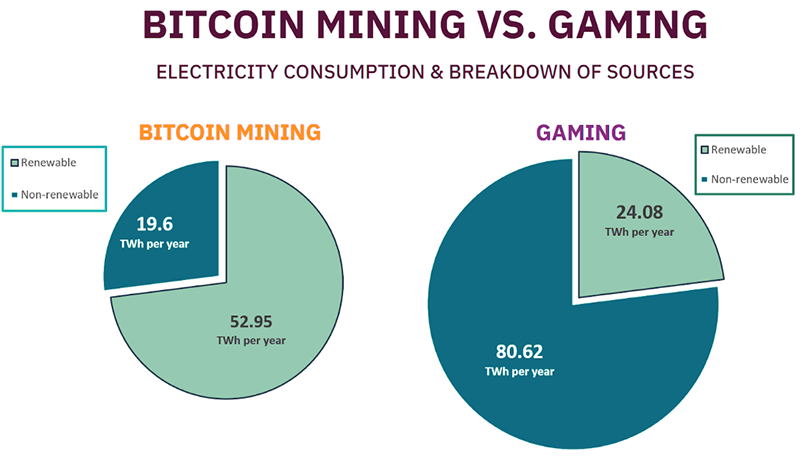According to a new study, Bitcoin consumes 56 times less energy than the banking system – 194 million times less with Lightning
We started this series with a potential use case of how Bitcoin mining can make renewable energies economically viable by using surplus energy that would be wasted otherwise to fund and develop energy infrastructure.
Now let’s take a look at the bigger picture. Mainstream media usually portray Bitcoin as a system that wastes energy and compares its energy consumption to that of nation states. We can read that Bitcoin consumes more energy than Argentina, Norway or Switzerland.
These articles are usually based on the Cambridge Bitcoin Electricity Consumption Index (CBECI) which estimates that Bitcoin consumes roughly 122 TW/h per year. You may ask yourself why a global phenomen such as Bitcoin is compared to just one country. To understand the real dimension, let’s better compare global Bitcoin mining with global energy consumption.
According to a study by BP, the total energy consumption of the world in 2019 was about 170,000 TW/h. If the CBECI estimate is correct, it means that a share of around 0.007 of the world’s total energy is used for Bitcoin mining. That doesn’t sound quite as shocking as the mainstream media reports that aim to discredit Bitcoin (guess why?).
However, a recently published report by Valuechain, a blockchain consulting company, estimates that Bitcoin consumes 88.95 TWh per year or a share of 0.005 of global energy, considerably less than the Cambridge estimate. Their report compiles almost four years of research and takes into account the average lifespan of Bitcoin mining machines and innovations of the mining industry.
Let’s use another comparison: according to a study by mining company Braiins, 104.7 TW/h of the world’s energy is used for playing video games. This implies the question: is Bitcoin more or less useful than video gaming? A gamer would probably have a different opinion on this than a Bitcoiner. It makes more sense to compare Bitcoin’s energy consumption to the legacy banking system, which is being replaced by it.

Valuechain did exactly that. According to their report, the creation and transporting of money and the physical banking infrastructure consume around 5,000 TW/h per year, which is 56 times more than Bitcoin. If the Lightning Network becomes widely used, these figures will change dramatically, as Lightning enables a much higher number of transactions for the same amount of energy. The report concludes that with Lightning, Bitcoin will be 194 million times more energy efficient than the current payment system.
“Bitcoin Lightning and Bitcoin are very efficient technological solutions that deserve to be adopted on a large scale”, says Valuechain’s founder Michael Khazzaka. “This invention is brilliant enough, efficient enough, and powerful enough to get mass adoption.”
It is beyond my means to judge the methodology of this study. However, I think it is safe to say that if the current banking system is replaced by a decentralised system such as Bitcoin, we can save a lot of energy, be it by a factor of 56 or 194 million.
To be continued
By Aaron Koenig